METAL GEAR SOLID 4: GUNS OF THE PATRIOTS
Metal Gear Solid 4: Guns of the Patriots was directed by Hideo Kojima and Shuyo Murata. It was developed by Kojima Productions exclusively for the PlayStation 3 and was designed around the motto, "No Place to Hide!" Ryan Payton stated that Metal Gear Solid 4 is the final canonical Metal Gear game to feature Solid Snake as the main character. The game was released worldwide on June 12, 2008, exactly 10 years after Metal Gear Solid and 20 years after the North American release of Metal Gear.
Metal Gear Solid 4 has received widespread critical acclaim, earning Game of the Year awards from several major gaming publications, including GameSpot, which hailed the game as technically flawless. Since its release, more than 4.33 million copies of the game have been shipped.On June 16, 2009, a little more than a year after the game's initial release, Metal Gear Solid 4 was re-released under the Greatest Hits banner.
In 2014, the world is in chaos, the "war economy" plunging the world into never-ending battle. This fuels the need for private military companies, the five largest of which (together rivaling the power of the entire United States Army) are owned by a single mother company, Outer Heaven, with Liquid Ocelot at the helm. Liquid Ocelot, a fusion of the consciousness of Liquid Snake and the body of Revolver Ocelot, is once again set on world domination. Solid Snake, now also referred to as Old Snake due to his advanced accelerated aging, is dispatched to assassinate Liquid Ocelot as a personal favor to Roy Campbell.

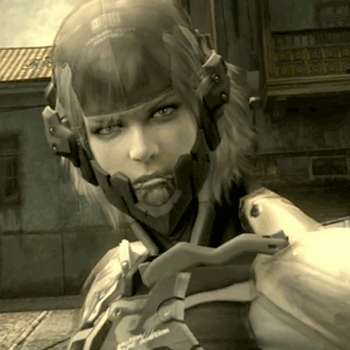
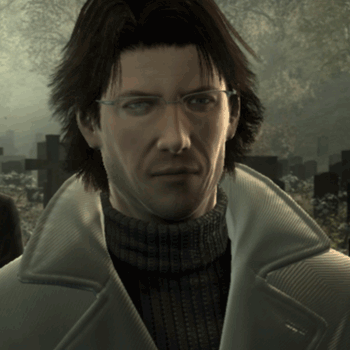
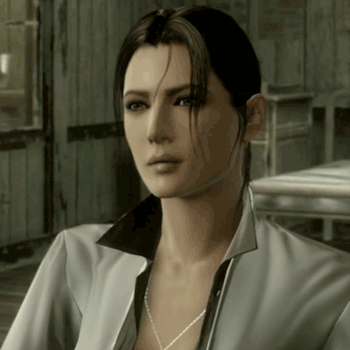
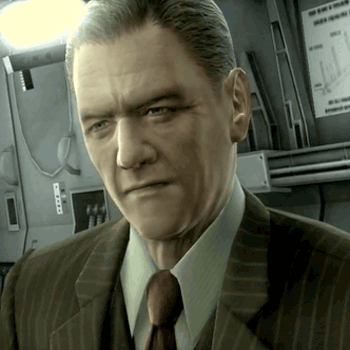

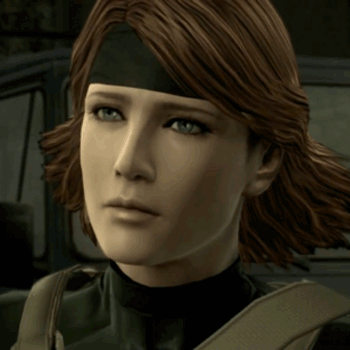
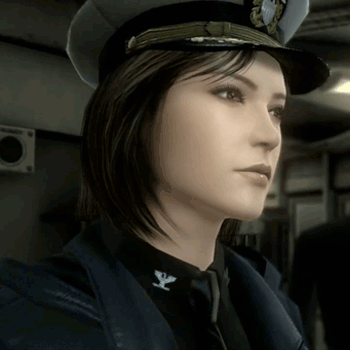
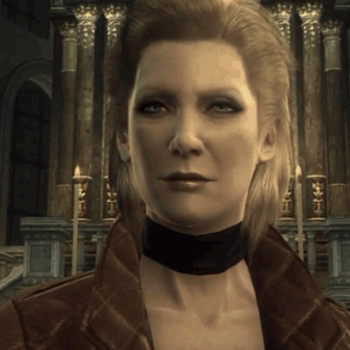

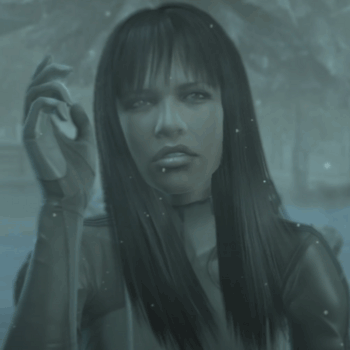
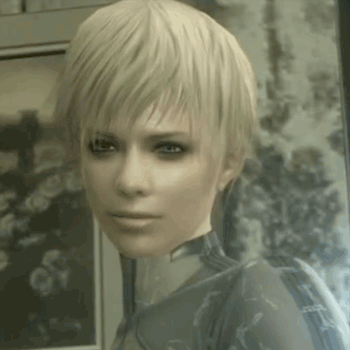


Metal Gear Solid 4 was first announced at a 2005 Sony press conference shortly before E3 2005, alongside the "No Place to Hide!" slogan. Initially, Kojima announced that he would be retiring as director of the Metal Gear series after Metal Gear Solid 3, and would leave his position open to another person for Metal Gear Solid 4, as he did after Metal Gear Solid and Metal Gear Solid 2. As a joke, the new director was announced as "Alan Smithee", but in R, a 400-page book bundled with Metal Gear Solid 3's Japanese Premium Package, the director was revealed to be Shuyo Murata, co-writer of Metal Gear Solid 3 and director of Zone of the Enders: The 2nd Runner. He also contributed by including humorous Easter eggs in Metal Gear: Ghost Babel and Metal Gear Solid 2.
At E3 2005, Kojima announced that he would be writing, producing, and directing the game alongside Muratya after substantial negative fan reaction, which included death threats.[8] He also announced that his newly-created studio owned by Konami, Kojima Productions, would be developing the game. Kojima also showed a trailer for Metal Gear Solid 4 that used Metal Gear Solid 3's game engine, showing what the game would eventually be, though he stressed that the game was still in early development. Kojima further stated that the game would take place several years after the events of Metal Gear Solid 2 and would feature an online battle mode. Kojima also announced that Meryl Silverburgh, Otacon, and Liquid Ocelot would be in the game and that Solid Snake would be the main character, as well as hinting that Raiden might make an appearance. Kojima also stated that the game was to include connectivity to Metal Gear Acid 2, though this was dropped as development progressed.
In a June 2005 issue of Japanese gaming magazine Famitsu, Kojima stated that the reason that the PS3 was chosen as the format for Metal Gear Solid 4 was that the Metal Gear series has been brought up with Sony hardware, the Sony market, and through the support of Sony, making the choice a simple one. Kojima also stated in the interview that he would not mind porting it to other hardware. In the September 2005 issue of Famitsu, the first screenshots of the game's engine was revealed, showing a much older Solid Snake. A robot named Metal Gear Mk. II was also revealed, alongside Otacon. The magazine also featured an interview with Kojima where he stated that Raiden would be returning and that his appearance would be radically different. Kojima also mentioned that Snake would be in a war-zone with two groups fighting each other and that there would be a new element of "psychological warfare" featured in the game.
At the 2005 Tokyo Game Show, Metal Gear Solid 4 made its first full appearance. The full title of the game was announced to be Metal Gear Solid 4: Guns of the Patriots, and a trailer for the game featuring in-game footage of the new game engine made specifically for the PS3 was shown. Kojima also stated again that Metal Gear Solid 4 would be the last game in the Metal Gear series. Kojima also showed a trailer titled Metal Gear Raiden: Snake Eraser that featured Raiden trying to kill Big Boss so that he could take Solid Snake's place as the main character in Metal Gear Solid 4. Afterwards, Kojima demonstrated Metal Gear Solid 4 running off an actual PS3 development kit with a DualShock 2 used as a controller, which revealed the real time graphics the game would be using. Kojima demonstrated some of the lighting and effects possible with the PS3 game engine, stating that he "always wanted to do self-shadowing, but couldn't" before the PS3. Yoji Shinkawa also appeared alongside Kojima, where they explained that a filtering effect would be used in the game that could not be done in the previous Metal Gear games. Kojima stated that "there's no sense of atmosphere [in the game], so on top of this we add a metal color and make it look like a movie on film. Using various effects, we dirty it up." Kojima also revealed "the new Metal Gear", a half-living, half-machine creation. Kojima also demonstrated that Metal Gear Mk. II was being controlled by Otacon, who was far away from the battlefield. Kojima further stated that player choice would have a role in the game as the player would be able to make soldiers into friends or enemies. Kojima also stated that the game's theme would be "SENSE"; previous themes in the series had been "GENE" (Metal Gear Solid), "MEME" (Metal Gear Solid 2), and "SCENE" (Metal Gear Solid 3).
In an interview with Japanese gaming magazine Hype Magazine in September 2005, Kojima mentioned that Snake had aged so much because he was a clone of Big Boss, resulting in him aging quicker than a normal human. Kojima also confirmed that Ocelot would be returning and that the player could expect a fight between Snake and Ocelot. He also clarified the "No Place to Hide" theme, where in Metal Gear Solid 4 Snake was in the center of a war zone where battles were common and where buildings were damaged and destroyed, leaving Snake with situations where there really was no place to hide. The phrase also had another meaning where the player might decide there was no reason to hide. Kojima explained that Snake might find himself between two groups, and that it was possible that a third and a fourth group would also engage in the battle. Snake could then choose to make an alliance with the groups to infiltrate other groups, making it so that hiding was not a requirement. Kojima clarified the "psychological warfare" he previously mentioned; he described the actions of the enemies in previous Metal Gear games to be unrealistic, as the enemies appeared to be cold killing machines. Metal Gear Solid 4 would change this in that standard soldiers are psychologically weak, and by surprising them with a noise, the player can reduce their preparedness for battle.
At Konami's E3 2006 press conference, Kojima Productions showed a new trailer for the game that demonstrated OctoCamo, a camouflage system Snake would use in the game. OctoCamo acted like an octopus, where it would change the texture of Snake's suit to match the environment. The trailer also revealed Ocelot, Meryl, Naomi Hunter, and Raiden. In the May 2005 issue of Famitsu, Kojima stated that Metal Gear Solid 4 would wrap-up the whole Metal Gear story and that "we'll clear up all mysteries in 4 and, in the end, after this, will Snake die!?" Kojima also said that "nearly all the characters from the Metal Gear Solid games would make an appearance" and that gameplay from Metal Gear Solid 3 would return in Metal Gear Solid 4. Kojima gave an example of OctoCamo, saying that if Snake was standing next to a wall worn out with holes, he too would appear to have holes. Kojima further confirmed that the game would feature online play, stating that "the online in Subsistence was just the preparation for 4."
At the 2006 Tokyo Game Show, Kojima stated that Kojima Productions had done a lot of research for the development of the game. They went through military training and traveled to different parts of the world to develop the settings for Metal Gear Solid 4 and showed photos of the Middle East which closely resembled the setting for the trailers. Kojima further stated that the game would have 3D models created from real people through 3D capturing. Kojima confirmed that Harry Gregson-Williams would return to compose the game's soundtrack, and that the game's logo was made by Logan, a group of artists that has worked on recent Madonna and U2 videos. Regarding Metal Gear Solid: Portable Ops, which was still in development, Kojima stated that "if you change the Ops story, you have to change 4. If you change 4, it also becomes necessary to change Ops. Until Ops is finished, 4's story can't be finalized." On a related note, Ryan Payton in a later interview elaborated that another reason for the delay in finalizing the story for 4 was due to the 24 hour news cycle, specifically that Hideo Kojima's development team due to a change in pace by trying to spend more time focusing on current events (specifically, the War in Iraq, the War in Afghanistan, Rwanda, and various other instances where PMCs were being hired, without even including Blackwater) spent a lot of time constantly altering the story even when literally days from finalizing the story due to stories told by news outlets such as NHK.
In March 2007, it was announced that David Hayter, Quinton Flynn, Paul Eiding, and Christopher Randolph would be returning to reprise their roles as Solid Snake, Raiden, Roy Campbell, and Otacon, respectively. In July 2007, Kojima announced Metal Gear Solid: Portable Ops Plus and Metal Gear Online. In August 2007, Kojima announced the Beauty and the Beast Unit will be the main enemies in the game. The unit consists of four females – Laughing Octopus, Raging Raven, Crying Wolf, and Screaming Mantis – who were empowered with special, unique abilities and had individual backstories which outline how they had became the beings they are. All four of the women were born out of innocence, but were transformed by the horrors of war into beasts, physically and mentally. The game would also be set across various stages, including the Middle East and South America as Solid Snake, now "Old Snake", had been asked to assassinate Liquid Ocelot. The game would also feature an upgraded CQC system first introduced in Metal Gear Solid 3.
In January 2008, Ryan Payton stated that the game was almost completed and was about to go through beta testing. On February 28, Konami announced that the game would be released on June 12, 2008. Konami also stated that Metal Gear Online would be bundled with Metal Gear Solid 4 and that it would support up to 16 players. To promote the game, Konami announced that people who pre-ordered the game would receive a DVD titled Metal Gear Saga Vol. 2 which contains a prologue recapping the franchise, a 20th anniversary retrospective, character bios, and a collection of trailers for Metal Gear Solid 4. It was also revealed that beta testing for Metal Gear Online would last for approximately 2 weeks.In March 2008, Kojima stated that the player would move between different countries in the game. However, Kojima stated that he was not entirely satisfied with the game's quality and that the 50 GB of data the Blu-ray Disc can hold was not enough for the game and that the game had to be compressed for it to fit on the Blu-ray Disc.
The game was originally to have featured scenes of female nudity, but these were removed in order to secure a lower rating. For example, the Beauty and the Beast Unit's Beauty forms were to have been naked, but was changed in order to avoid the game receiving an AO rating. Similarly, a subplot of the Naomi tracking scene had Snake following a trail of female clothing, eventually leading him to a naked female soldier; according to the Integral Podcast, this was cut for the same reason.
On June 12, 2008, after being in development for more than three years, the game was finally released worldwide.
After the release of Metal Gear Solid 4, Ryan Payton admitted that they didn't plan on continuations of the Metal Gear series when they made Metal Gear Solid 2 and Metal Gear Solid 3, and remarked that it "was nothing short of a miracle" that they were able to tie up all the loose ends.Payton stated that they had a great deal of freedom in their depiction of PMCs due to the private military world being somewhat unknown. He went on to explain that they had to be careful to avoid portraying the entire Middle East a war zone or its people as terrorists. According to KazRadio, Kojima didn't plan on making Metal Gear Solid 4 and only did so because the fans wanted the pursuit of the Patriots due to Metal Gear Solid 2.
A game that dealt with the documentaries and making of Metal Gear Solid 4, called The Document of Metal Gear Solid 4: Guns of the Patriots, was originally to have been produced but it was ultimately cancelled.

